
Polar & Tundra Cold & Dry Biomes

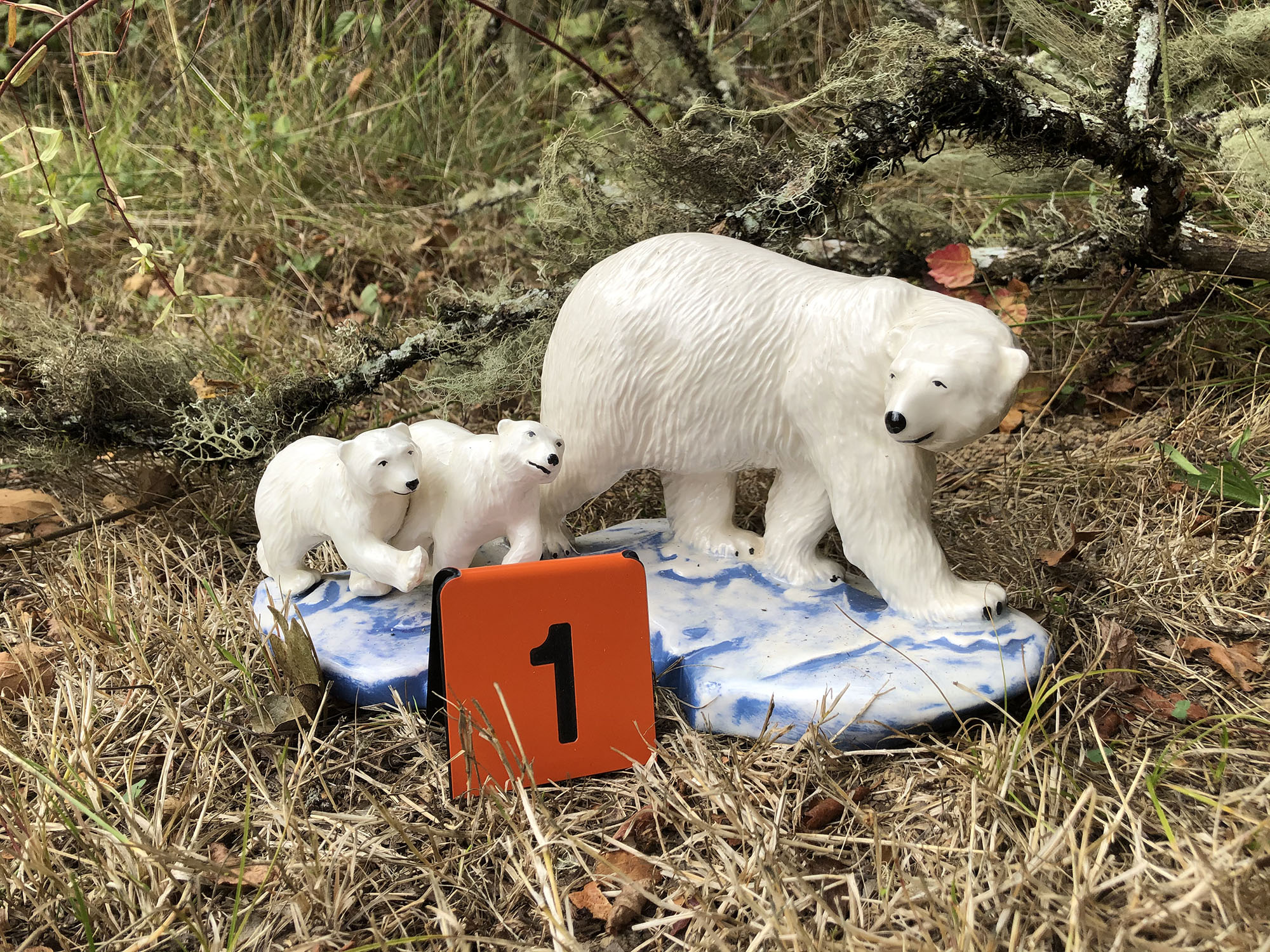
Polar & Tundra Objectives
-
Describe the climate and organisms of the polar regions, including threats to polar carnivores.
-
Describe the climate and organisms of the tundra, including plant characteristics.
-
List and utilize seven steps to quickly assess and collect information on a field site.
Polar Biomes
This video introduces the polar regions: the Arctic and Antarctica.
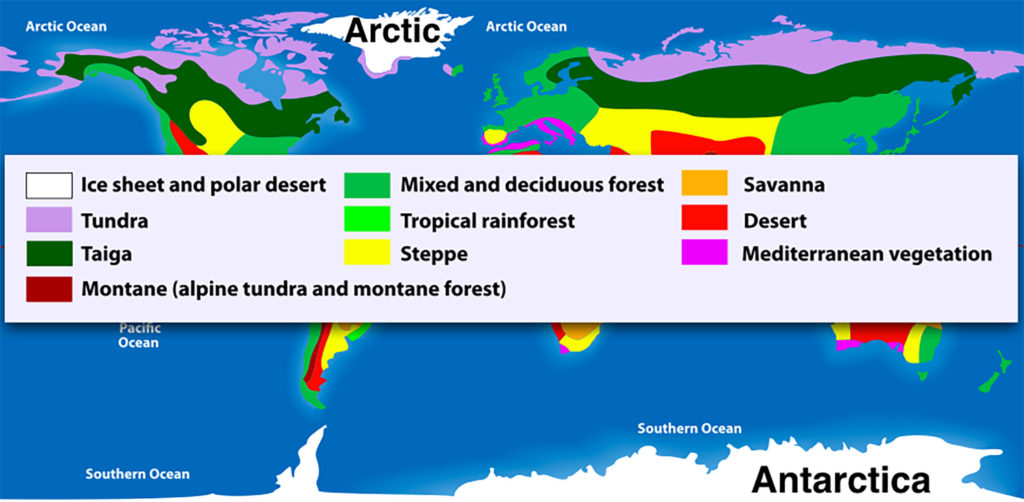
The polar regions of the Arctic to the north and Antarctica to the south receive the lowest amount of solar energy and have low temperatures as well as low precipitation.

Unlike other terrestrial ecosystems, the polar regions are dominated and defined by ice, not plants.
There are polar producers, primarily algae, with moss and lichens in limited distribution in warmer areas.
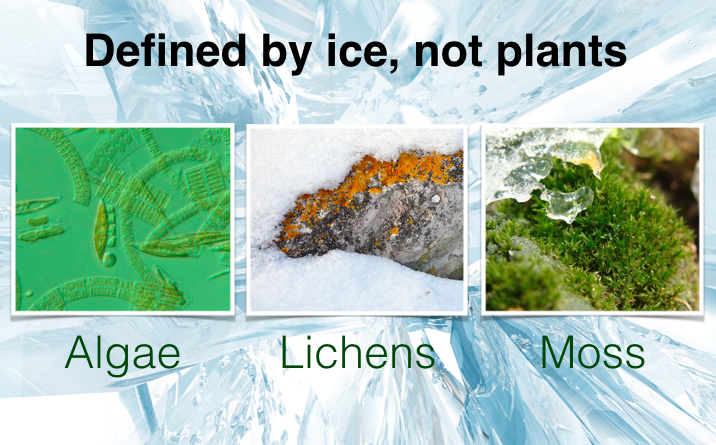
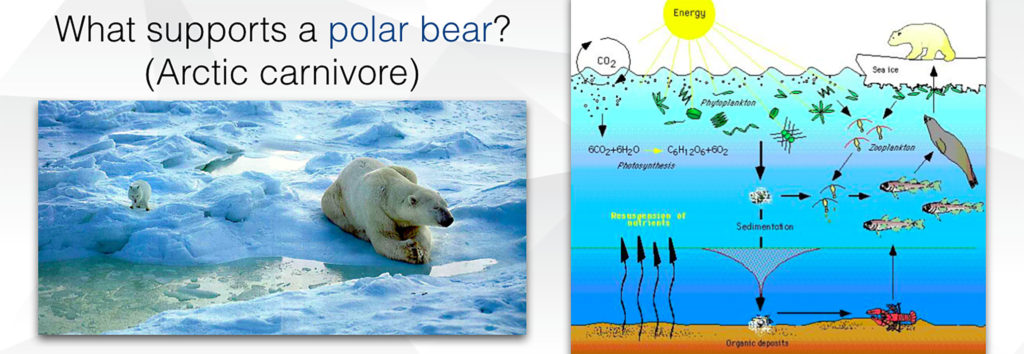
Polar bears are not eating these small producers, what ecosystem are they living off of if not the ice?
Emperor penguins live off of fish in marine food webs.

Tundra
The tundra lies directly below the Arctic. This video introduces the Tundra.
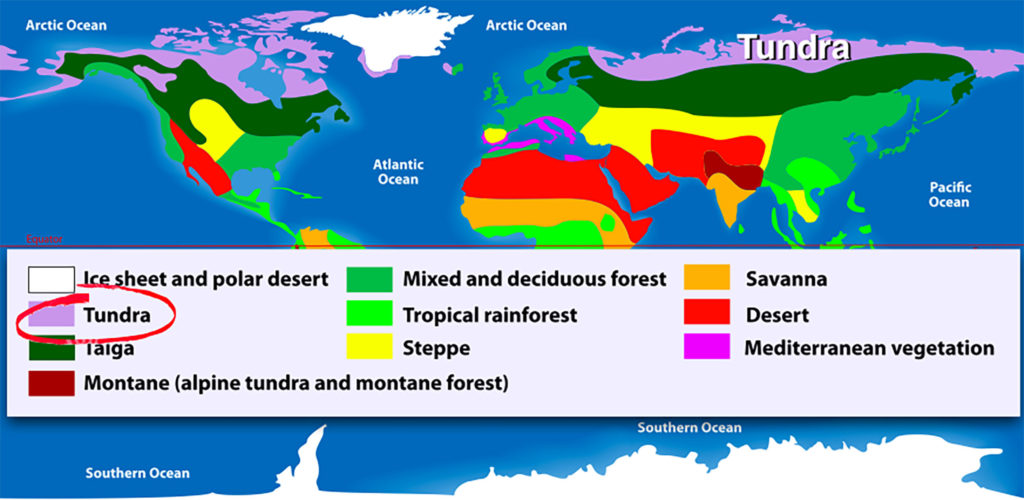
In the tundra soil, a layer of water called _____ stays frozen all year long.

The low moisture and permafrost limits plant growth; few trees exist. Plants are small and rounded with lower surfaces areas exposed to the wind and cold.
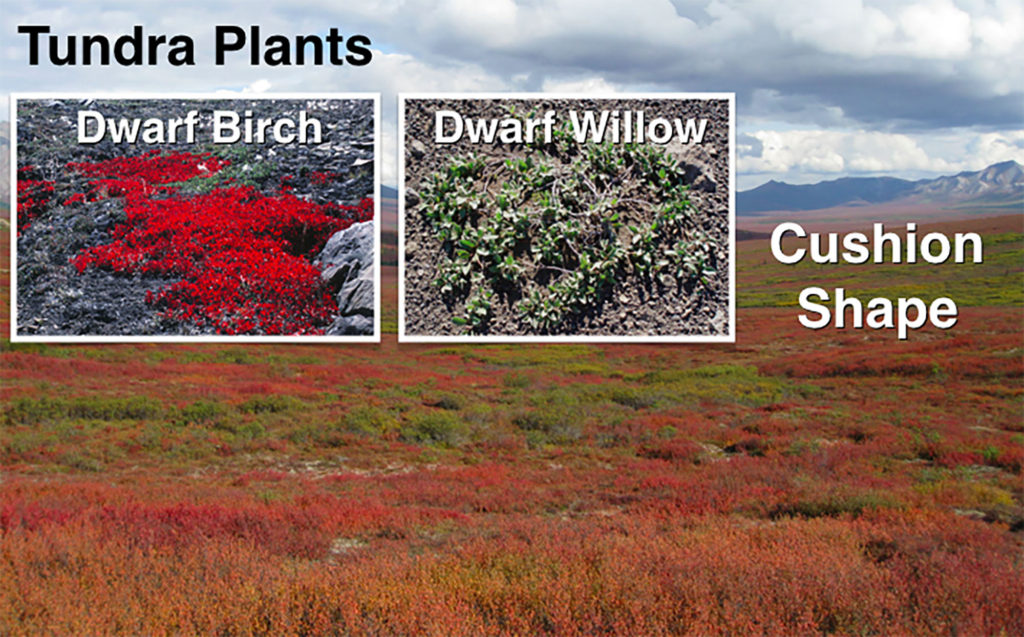

Herds of caribou, also called reindeer, can live off the moss, lichens, grasses, and small shrubs.
Orienting at a Field Site
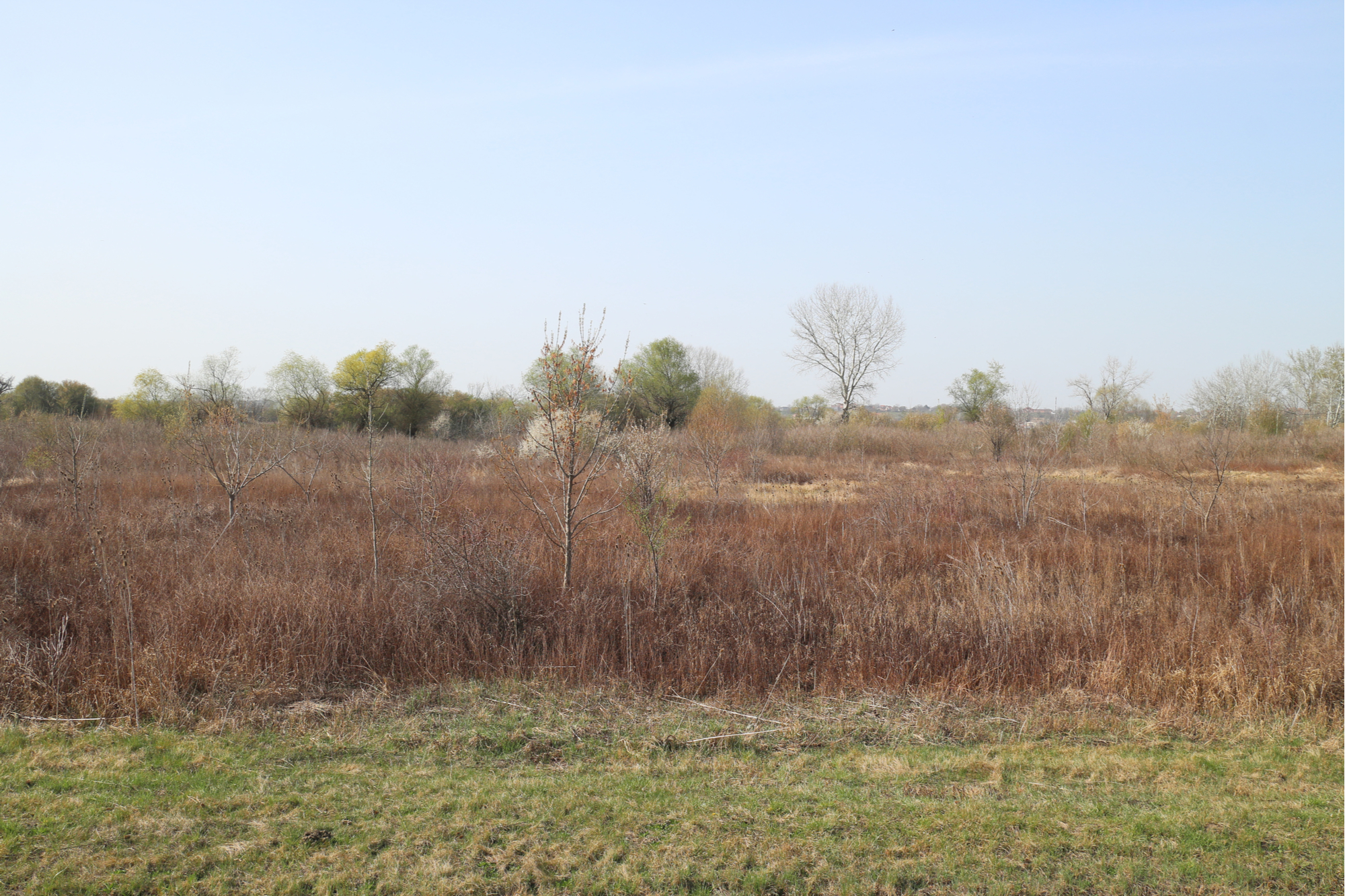
Whether you are conducting field research or trying to fully experience a new travel destination, it is valuable to have the habit of assessing the location.
This video introduces seven basic steps you can use to quickly collect information on a site incorporating the topic lenses from this course. You will be using these in the next media assignment.
Here are the seven steps in action.
You will be able to make a video, take photos, and or notes as part of your media piece trying these steps on location.
We are almost ready for field work!
In the first planning step of the seven steps, consider behaviors you want you and your group to engage in to preserve the experience for yourselves, others, and the environment.
Its time to go outdoors and put these seven steps to work!
This is the first of several excursions, you can pick anywhere indoors or outdoors that has organisms for this assignment. It can be a yard, a park, etc. You may even successfully complete this looking out a ground floor window.
Review your safety check list and get your field kit ready to go. Since this can be close-to-home, you may want to reduce non-essentials in your field kit for this outing.
We recommend doing field work with someone else; be sure to let them know about any potential safety concerns
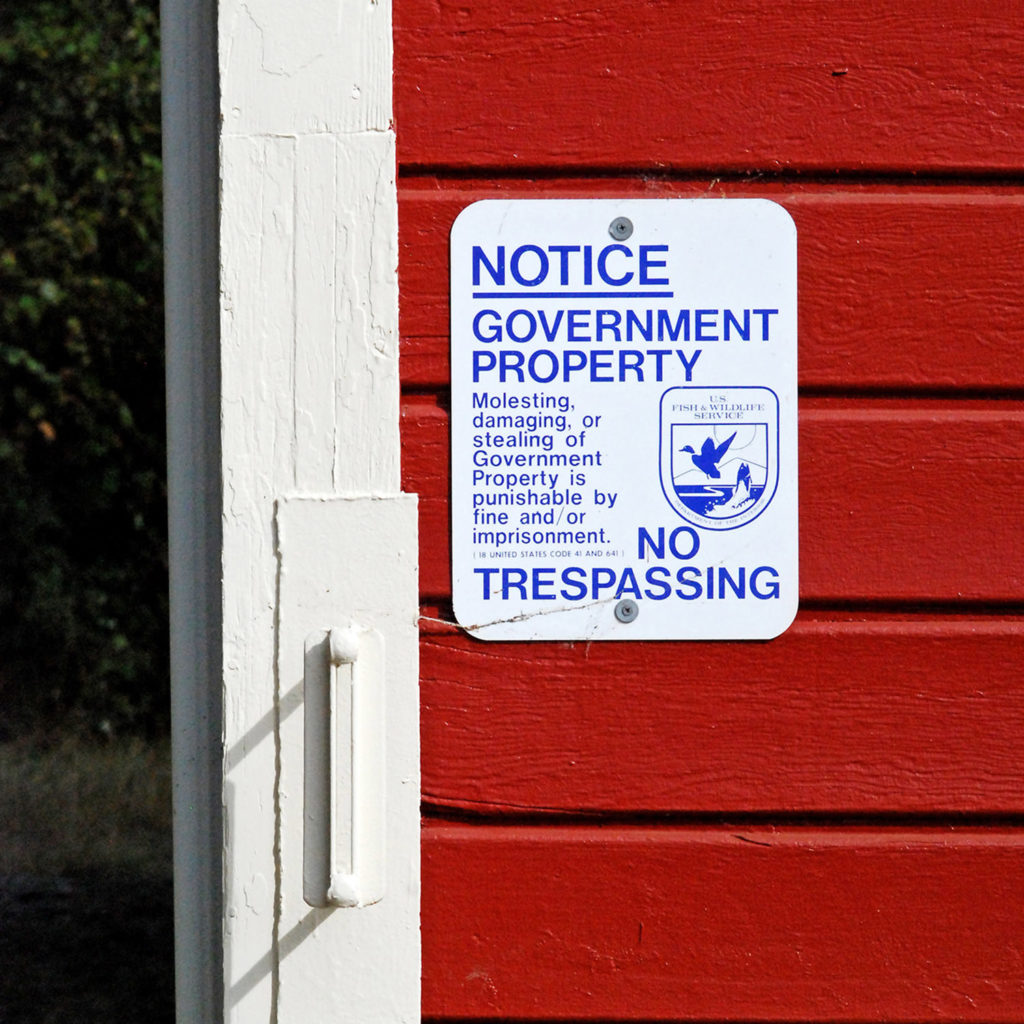
Stick to public access areas, there is plenty to find even in the smallest of plots.
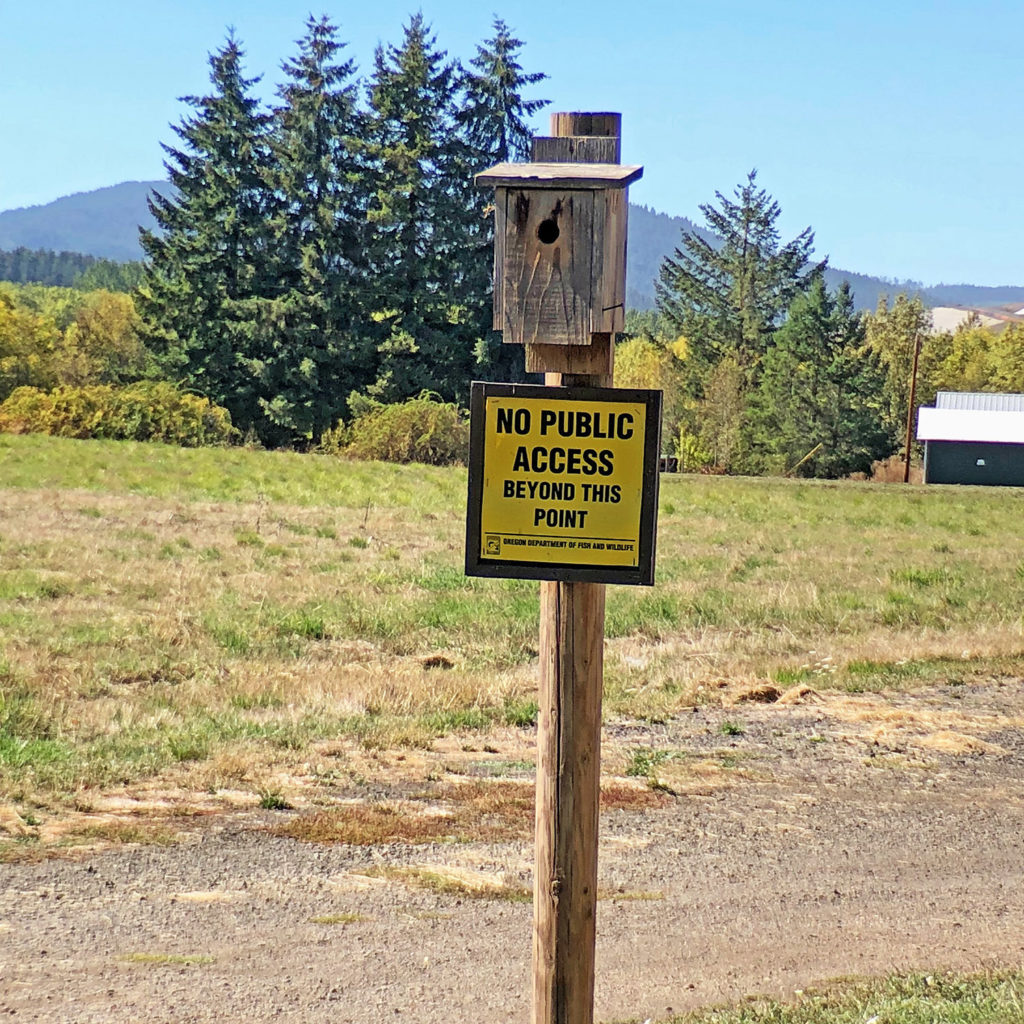
Start Your 2B Media Assignment here
Seven Steps
Select a field location. You do not need to go far, this can be close to where you live, but does need to have organisms. It can be a park, yard or basement areas with spiders and insects. You are putting into practice the seven steps, beginning with selecting the site and planning what you will be doing. Consider safety with each step.
You are capturing information for each step and this could be notes, captioned photos, and/or a video. We will have more specific field assignments in upcoming guides.
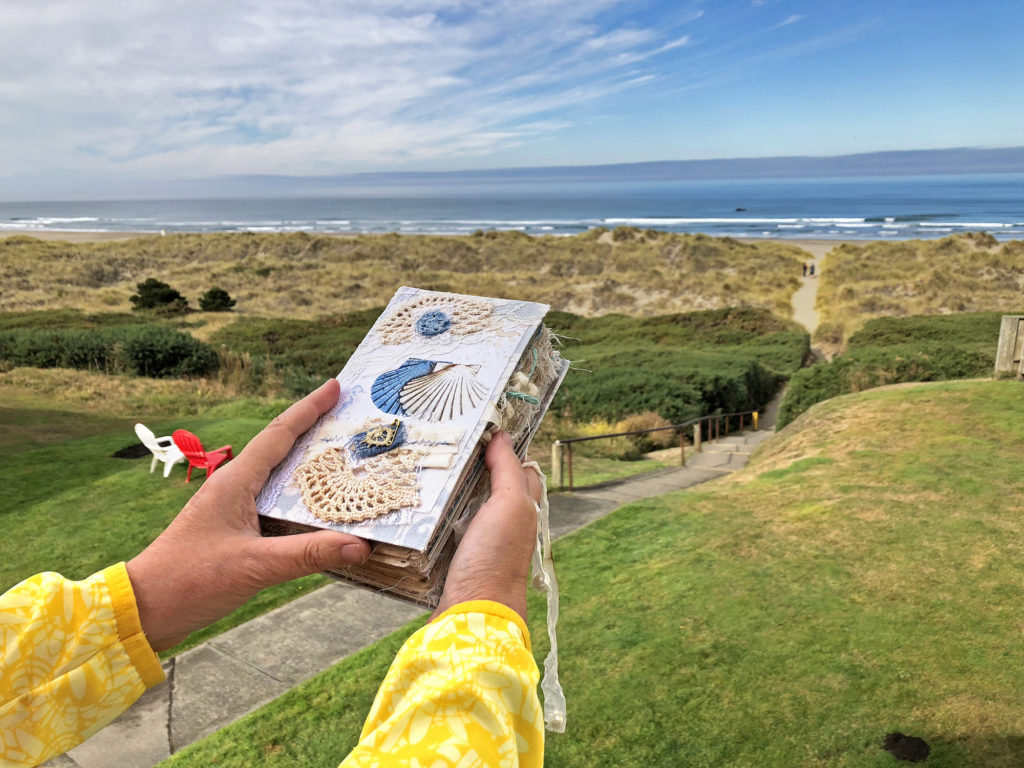
Include in your notes for a single location:
-
Numbered 1 through 7, information for each of the seven steps to begin work at a field site: planning/site selection criteria, scan of location, climate, topography, as well as information on observable biodiversity, ecology, and conservation biology.
-
your observations can be notes, labeled photos, video with commentary, or a combination of media. If the file is large, it may help to host on another site (like YouTube, Vimeo, etc.) and upload the link to Canvas.
The next section introduces the Taiga, large coniferous forests south of the tundra.

Check your knowledge. Can you:
-
describe the climate and organisms of the polar regions, including threats to polar carnivores?
-
describe the climate and organisms of the tundra, including plant characteristics?
-
list and utilize seven steps to quickly assess and collect information on a field site?



